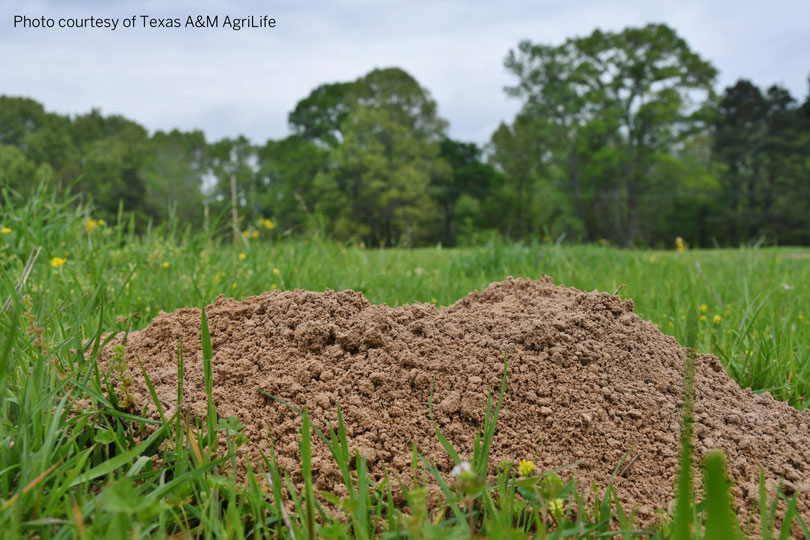By Justin Walker
Communications Specialist
A Texas A&M AgriLife Extension Service expert advises farmers and ranchers to address a potentially serious issue on their farms: gophers.
Dr. Vanessa Corriher-Olsen, AgriLife Extension forage specialist, said equipment can be damaged and livestock can be injured due to gopher burrowing, especially in the eastern portion of the state.
“We see more gophers in the sandy soils of East Texas,” she said. “The soil is easier to burrow and build mounds and tunnel systems. Gophers can cause significant issues in a pasture if they’re not controlled. Their mounds can be rough on equipment.”
A single gopher, which lives a mostly solitary life underground, can burrow a tunnel system extending up to 800 feet long, covering an acre of land and ranging in depth of a few inches to several feet.
Corriher-Olsen said most farmers and ranchers choose eradication measures to control gophers.
Control methods should be implemented during the spring or fall when gophers are most active near the surface, according to AgriLife Extension. Strategies for treating in pastures vary depending on location, size and scale of the area.
While trapping is a choice for homeowners, farmers and ranchers will likely see higher impact from pesticide use.
“Most producers will use a Diphacinone-based product,” she said. “Products are usually treated grain or sorghum.”
The pesticide needs to be placed directly into the tunnel system for better results, Corriher-Olsen said. This also prevents birds, pets and other animals from reaching the product.
“Dealing with gophers can be tricky,” Corriher-Olson said. “They rarely are seen, but mounds and tunnels are a good indication of their presence. They are a pest that could take some persistence and multiple applications in different locations to be controlled successfully.”
Click here for more information on gopher control.


Gophers are bad, but I have a bigger problem with moles?
Is there a way to get rid of them?
We recommend you reach out to your local AgriLife Extension agent for help with moles.